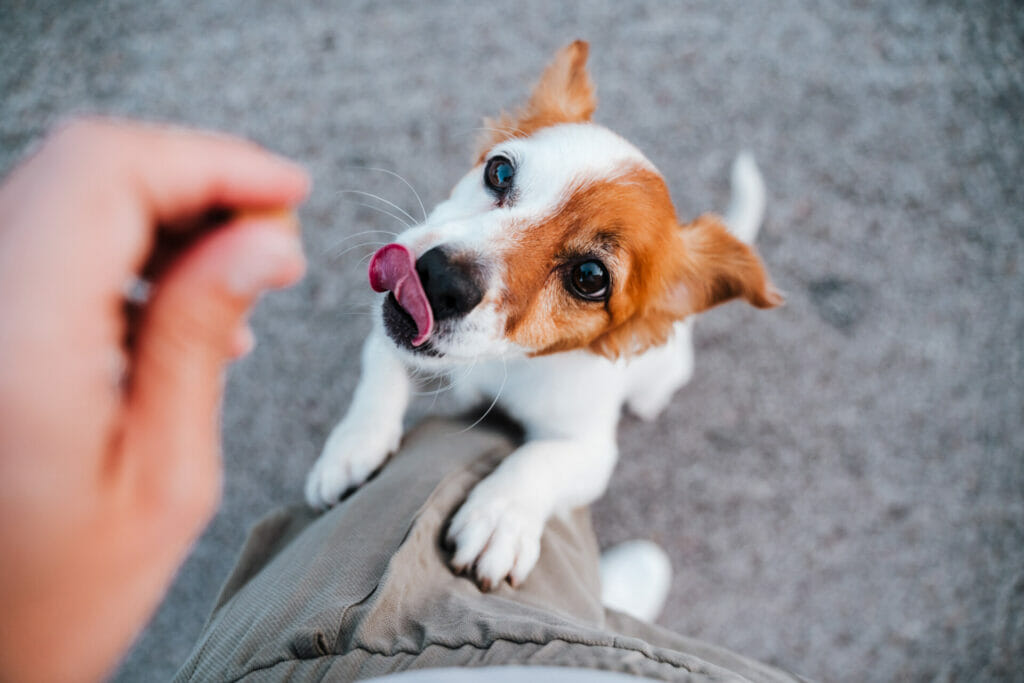Positive reinforcement training, or LIMA (least invasive, minimally aversive) is a dog training method every dog owner should master. It elicits creative thinking and kindles a love for learning within dogs. Like any dog training method, positive reinforcement requires practice to implement it in your dog’s training effectively. In this article, we will dive deep into the science behind positive reinforcement training and learn how to use it in your daily interactions with your dog.
What is positive reinforcement?
LIMA is one of the four quadrants of operant conditioning. Positive reinforcement utilizes rewards to increase the likelihood of a behavior being repeated. For example, you give your dog a treat for coming when called. Now, the chance of your dog coming when called again has increased due to the expectation of a reward.
When should positive reinforcement be used?
is an excellent method to use for a variety of training circumstances. It is handy when teaching a dog a new behavior or trick. Positive reinforcement can also benefit dogs that are fearful of people or new environments and need some encouragement.

How to use positive reinforcement
This training method rewards good behavior to increase the likelihood of that behavior being repeated. For example, if your dog sits, you reward them so they’ll perform the behavior again.
But there’s a little more to it than that. To use positive reinforcement most effectively, you have to use a marker. This could be a word like “good” or a distinct sound like a clicker. The marker will mark the behavior at the exact moment it is performed. This enhances the effectiveness and helps the dog understand precisely what they did that was good.
For example, you tell your dog to sit. As soon as your dog’s bum touches the ground, you mark. Your dog now knows that their bum touching the ground is a desired behavior. If you don’t mark at the exact moment, your dog can get confused and think you are marking a different behavior, like them sniffing your hand or licking their lips.
Charging a marker
So how do we teach a dog the meaning of a marker? We have to follow a process known as “charging the marker.” When we charge a marker, we give it meaning and value. If you never charge a marker and just start telling your dog “good” all the time, they won’t understand what you’re trying to convey.
By using and charging a marker, our goal is for the dog to perceive the marker as a reward eventually. This is what is known as classical conditioning. We give a neutral stimulus (the marker) meaning by associating it with an unconditioned stimulus (the treats). This results in a conditioned response. It seems confusing, but let me explain.

Let’s use the word “good” as a marker. We’ll start by saying the word and giving the dog a treat. We repeat this until the dog associates the word “good” with receiving treats. The dog will expect the reward just by hearing the word “good.” Eventually, the dog will have such a strong association between the marker and the reward that the marker will be enough. The charged marker can now mark any good behavior you want your dog to repeat.
This is the beauty of LIMA training. It is completely versatile and can be used in almost any situation. While the examples we explored used simple commands like “sit” or “come,” you can use positive reinforcement to teach your dog complex tricks or help them overcome a specific fear.
The use of positive reinforcement elicits a love for learning and encourages creative thinking in dogs. Every dog owner must master this method to provide a solid basis for all future training.




















